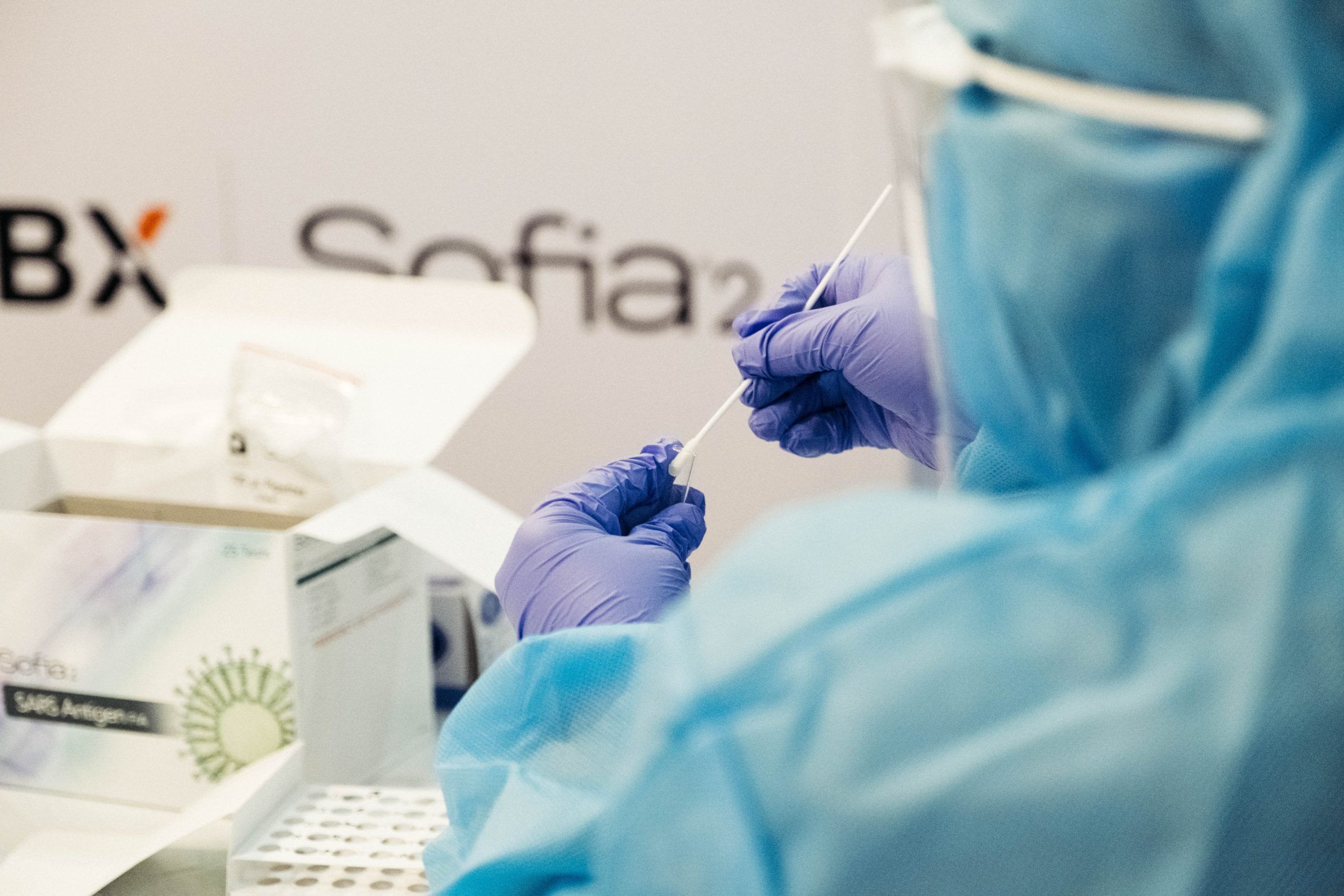WSACS Recommendations for Research

Research
Date | April 7, 2021 |
Modified | April 7, 2021 |
Author | WSACS |
General Principles & Definitions
Studies involving human subjects that are endorsed or supported by the WSACS should be conducted according to the principles of Good Clinical Practice (GCP). Although primarily intended for clinical studies that 1) investigate the clinical or pharmacological effect of an investigational product, 2) evaluate measurement devices or techniques, 3) report epidemiological data, or 4) describe the effect of an intervention other than administration of a pharmacological product, all studies should adhere to this internationally adopted standard. Multicentre studies are, per se, organized by a number of individuals, and each of them has different tasks and responsibilities. For clarity, the tasks of the different actors in the organization of a trial and related terms are explained here, based on the responsibilities as described in the ICH-GCP document. These should be used appropriately throughout the protocol and in all communications related to the study.
GCP is an international ethical and scientific quality standard for designing, conducting, recording and reporting trials that involve the participation of human subjects. Compliance with this standard provides public assurance that the rights, safety and well being of trial subjects are protected, are consistent with the principles that have their origin in the Declaration of Helsinki, and that the clinical trial data are credible. In Europe, the requirements for the conduct of clinical trials in Europe including GCP and GMP and inspections of these, have been implemented in the Clinical Trial Directive (Directive 2001/20/EC and 2005/28/EC).
The following definitions commonly used in GCP-ICH are applicable:
- The Sponsor – An individual, company, institution, or organization which takes responsibility for the initiation, management, and/or financing of a clinical trial. Often, the sponsor and coordinating investigator will be the same individual, and in that case, she/he will be called the Sponsor-Investigator.
- Sponsor-Investigator – An individual who both initiates and conducts, alone or with others, a clinical trial, and under whose immediate direction the investigational product is administered to, dispensed to, or used by a subject. The term does not include any person other than an individual (e.g., it does not include a corporation or an agency). The obligations of a sponsor-investigator include both those of a sponsor and those of an investigator.
- The Investigator – A person responsible for the conduct of the clinical trial at a trial site. If a trial is conducted by a team of individuals at a trial site, the investigator is the responsible leader of the team and may be called the principal investigator. The investigator will follow up the patients in the trial, communicate with the Ethics committee and ensure that the study is conducted according to the protocol.
- Multicentre Trial – A clinical trial conducted according to a single protocol but at more than one site, and therefore, carried out by more than one investigator.
- Protocol – A document that describes the objective(s), design, methodology, statistical considerations, and organization of a trial. The protocol usually also gives the background and rationale for the trial, but these could be provided in other protocol referenced documents.
- Source Data – All information in original records and certified copies of original records of clinical findings, observations, or other activities in a clinical trial necessary for the reconstruction and evaluation of the trial. Source data are contained in source documents.
- Source Documents – Original documents, data, and records (e.g., hospital records, clinical and office charts, laboratory notes, memoranda, subjects’ diaries or evaluation checklists, pharmacy dispensing records, recorded data from automated instruments, copies or transcriptions certified after verification as being accurate copies, microfiches, photographic negatives, microfilm or magnetic media, x-rays, subject files, and records kept at the pharmacy, at the laboratories and at medico-technical departments involved in the clinical trial).
Practical implications of adhering to GCP and solutions offered by WSACS
Although implementing the standards of GCP may seem time consuming for studies that do not involve the study of investigational products, adherence to the ICH-GCP guidelines will serve as a quality label for the studies that are endorsed and supported by the WSACS.
The sponsor-investigator should provide the participating investigator:
- A study protocol including a clear description of the study procedures
- A Case Report Form (CRF) for data entry
- Patient informed consent forms in English
The CTWG will facilitate this procedure by providing templates for these documents.
Agreements between Sponsor-investigator and investigator
It is important that agreements should be made regarding the involvement of the investigator in multicentre trials. This is not limited to the conduct of the study, and may include the role of the investigator in drafting any report that is based on the results of the clinical study, such as – but not limited to – abstracts submitted for scientific meetings, poster presentations, and original papers. This agreement should preferentially be made in writing before the study is initiated.
The investigator participating in multicentre studies should be given the opportunity to add sub-studies to the protocol, in agreement with the sponsor-investigator. For these substudies, this investigator should be granted access to the study data, and in agreement and cooperation with the Sponsor-Investigator, allowed to analyze the data to answer the study question of the substudy. Agreements between Sponsor-investigator and the WSACS CTWG.
Sponsor-Investigator will acknowledge the endorsement or support of the WSACS CTWG on all publications that report the study results, such as – but not limited to – abstracts submitted for scientific meetings, poster presentations, and original papers.
Data management and trial monitoring
Complete and accurate data are an essential part of the record of any clinical research. Since serious problems can occur when data are missing or are not consistent with source medical records, each study should include a plan for the keeping of accurate and well documented data not subject to loss through computer failure or insecure storage.
Recommendations
- In prospective trials, data should be abstracted from source medical records as the trial proceeds, using data collection forms designed at the outset of the study. Data collection forms should also be used in retrospective record studies.
- The criteria for the evaluation of study subjects (including the classification of outcome and any treatment side effects) should be specified in the protocol or research plan.
- Interim review of the data from an ongoing trial should make use of statistical methods that guard against increased false-positive or false-negative reporting rates caused by inappropriate conclusions from preliminary analyses.
- For research involving primary data collection, the principal investigator should retain original data for as long as practically possible, but never for less than five years from the first major publication or from the completion of an unpublished study. All data should be kept in the research unit responsible for conducting the study. Copies of computer programs and the results from statistical calculations used in research involving nationally gathered survey data should also be kept by research units for a minimum of five years from publication based on these results. After notification to responsible departmental officials, principal investigators may make copies of original data or computer programs for personal use or when moving to another research unit or institution.
- If primary data are kept on a computer file, backup files should be maintained, preferably at a second site, to prevent loss from computer failure.
Authorship
- Criteria for authorship of a manuscript should be determined and announced by each department or research unit. The CTWG considers the only reasonable criterion to be that the co-author has made a significant intellectual or practical contribution. The concept of “honorary authorship” is deplorable.
- The first author should assure the head of the research unit or department chairperson that he/she has reviewed all primary data on which the report is based and provide a brief description of the role of each co-author. (In multi-institutional collaborations, the senior investigator in each institution should prepare such statements.)
- Appended to the final draft of the manuscript should be a signed statement from each co-author indicating that he/she has reviewed and approved the manuscript to the extent possible, given individual expertise.
Recommendations for research
In the field of IAH/ACS, three major types of studies can be identified: studies on measurement technique, epidemiological studies, and intervention studies.
1. Measurement techniques
Different devices and techniques have been developed to measure IAP via various routes. In human validation studies, various techniques to analyze the data and different definitions of acceptable results have been used.
The measurement technique under study should be described in detail, and should be compared to the current standard for intermittent IAP measurement, namely transvesicular measurement with an instillation volume which should be standardized in the study protocol and should not exceed 25 mL. The IAP is to be measured in supine position, with the pressure transducer zeroed at the midaxillary level.
Clinical validation studies should be performed in patients who are sedated to a RASS score of at least minus 4 or comparable, because interference of spontaneous abdominal muscle activity may interfere with the study results. Also, patients should be at risk for IAH, as defined by the presence of at least one risk factor for IAH. In order to make comparison between measurement techniques more easy, studies comparing a new technique should include patients who have IAP across the normal range, but also include at least one third of measurements with an elevated IAP (defined as an IAP of 12mmHg or more).
- Statistical considerations
Descriptive statistics of the IAP values in the study population should be provided. The measurements should be compared using Bland and Altman statistics, and bias with 95% confidence interval, including the lower and upper limits of agreement should be reported. A graphical representation of the data is needed to evaluate performance across the range of IAP in the study group. Correlation coefficients and scatterplots may be added. A new method can considered to be acceptable only if at least 20 relevant patients have been studied, if the bias (the difference between two measurements) does not exceed 1mmHg (either positive or negative) and the precision (the standard deviation of the bias) is not higher than 2mmHg. The percentage difference (defined as the precision divided by mean IAP) should also be provided, and be no higher that 25% (Critchley LA, Critchley JA. A meta-analysis of studies using bias and precision statistics to compare cardiac output measurement techniques. J Clin Monit Comput 1999; 15: 85-91). The number of measurements per patient should be reported, and if this is not the same in all patients, appropriate statistical correction is needed. - Summary
At least 20 relevant patients (see text for details)
At least a third of the measurements IAP of 12mmHg or more
Bias < 1mmHg
Precision < 2mmHg
Percentage difference < 25%2. Epidemiology studiesThe role of IAH in different diseases has yet to be elucidated, and therefore, complete reporting of the IAP measured in the study population of epidemiological studies is needed. Apart from the maximum and minimum IAP for a given time interval (e.g. during 1 day or during ICU stay), the mean and median should be provided, including standard deviation or interquartile range, as well as the duration of the different grades of IAH. - Grades of IAH
Grade I IAH: IAP between 12-15 mmHg
Grade II IAH: IAP between 16-20 mmHg
Grade III IAH: IAP between 21-25 mmHg
Grade IV IAH: IAP greater than 25 mmHgThe frequency of IAP monitoring may affect mean and maximal daily IAP levels as well as the incidence and prevalence of IAH when different thresholds are used, and should therefore be reported.Patient consciousness may also affect IAP measurement, and should also be reported.When abdominal perfusion pressure (APP) is reported, similar values should be given. - Statistical considerations
ROC curves graphically describe the sensitivity of a diagnostic test (true positive proportion) versus 1 minus specificity (false positive proportion) and provide an improved measure of the overall discriminatory power of a test as they assess all possible threshold values. A test that always predicts survival has an area under the ROC curve of 1.0 and a test that predicts survival no more often than by chance has an area of 0.5. The point on the ROC curve closest to the upper left corner is generally considered to optimize the sensitivity and specificity of the test. When evaluating the use of IAP or APP as a predictive parameter in epidemiological studies, the advantages of ROC analysis during study interpretation should be considered. Therefore, evaluation of IAP and APP thresholds should be based on the analysis of receiver operating characteristics (ROC) and the area under the ROC-curve.3. Intervention studiesAppropriate endpoint selection is of paramount importance in intervention studies, either prospective, or retrospective. In studies on intraabdominal pressure, obvious endpoints are the change in IAP, but also short and long term effects on organ function and effect on outcome should be reported.Outcome parameters should include length of stay in the ICU and in the hospital, and mortality.The effect of the intervention on organ function should be reported using true parameters of organ function, and not surrogate markers such as CVP or peak inspiratory pressure. Preferentially, organ function scores such as the SOFA score should be used, but other may apply. It may be appropriate to report subscores for relevant organ systems included in the SOFA scoring system.
Obviously, other established parameters of organ function can be used in addition to the organ function score used. Details of this parameter, and references to previous research showing the relevance of the parameters used should be provided.







